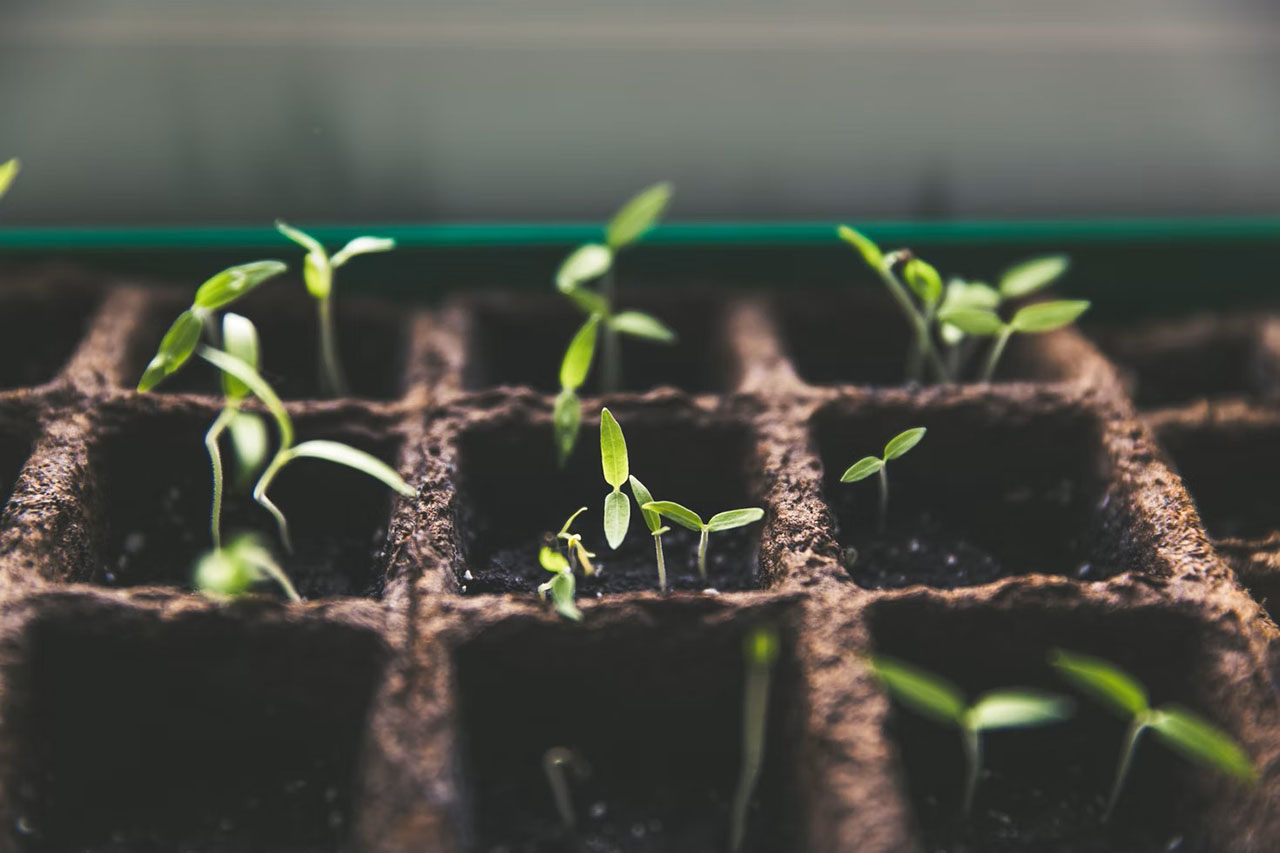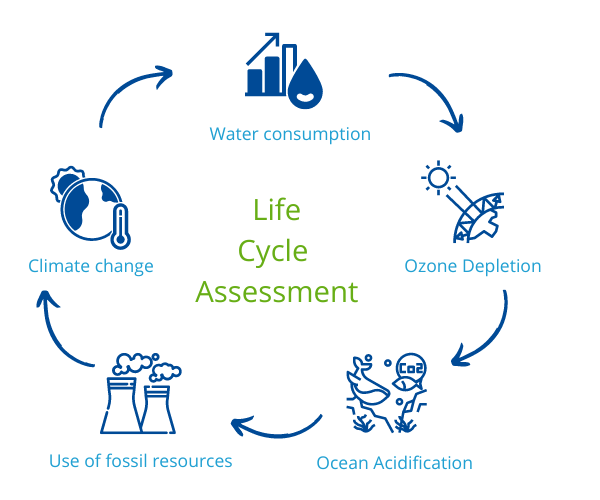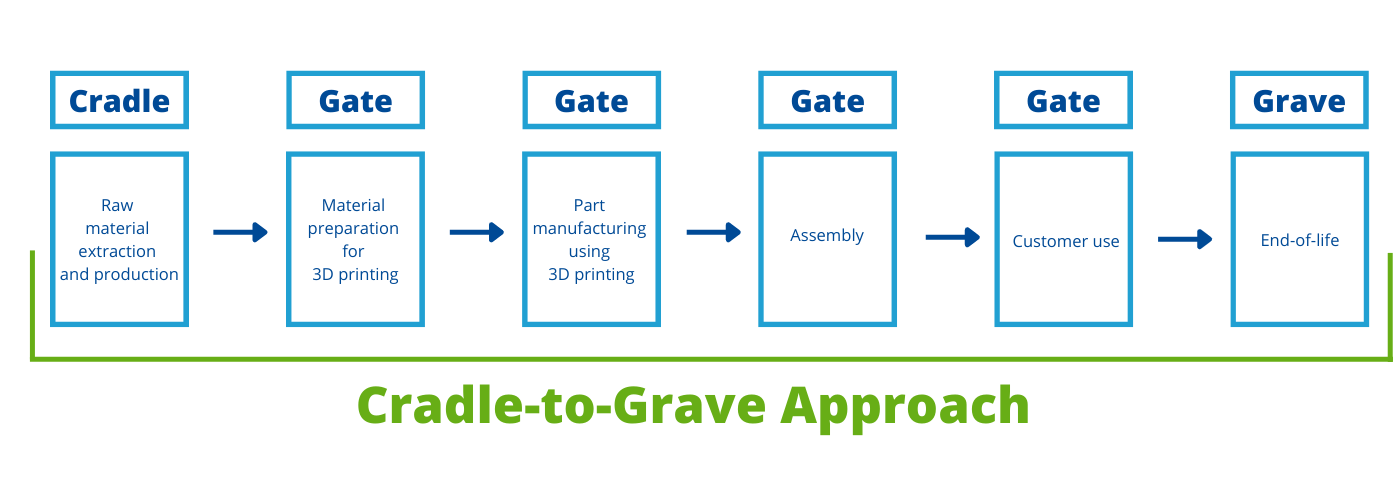Forward AM Initiatives
We at Forward AM take sustainability very seriously and want to provide as much transparency as possible. We are working on creating Life Cycle Assessments (LCA) for our products and are planning to update our list with further LCA from all business lines.
Find out what constitutes a Life Cycle Assessment, why we provide this information, and how to download our result datasheet.

Life Cycle Assessment
A Life Cycle Assessment is a study that calculates how much environmental impacts are associated with every step of a product.
This means a detailed report of the material, energy, etc., that are being used over a product’s life span. These data are gathered across the product’s industry value chain and later cumulated into an emission score.
As seen in the image, different categories impact the score of a Life Cycle Assessment.
- Climate change: This category reflects the climate change impact of air emissions of greenhouse gases (GHGs). The impact of greenhouse gas emissions – such as carbon dioxide (CO2), methane (CH4), and nitrous oxide (N2O) – is assessed over a fixed time period of 100 years.
- Water consumption: The demand for fresh water is strong and increasing. Even if we could think that there should be enough water for everyone, it is not distributed evenly, leading to water scarcity in case of poor water management and seasonal drought.

- Ocean Acidification: Also referred to as acid rain and acidification potential (AP). This category summarizes the effect of total emissions of acidic gases to air. Deposition of these emissions can acidify water bodies and soils and can cause building corrosion.
- Use of fossil resources: This category reflects the consumption of raw materials. It assesses fossil fuel impacts by considering the reserve base as well as current global rates of consumption of each substance. Therefore, the use of raw materials with low reserves and/or high consumption rates is more critical.
- Ozone Depletion: The ODP category reflects the depletion of stratospheric ozone due to the release of certain air emissions. Stratospheric ozone exists as a layer of naturally occurring gas in the upper atmosphere that protects living cells from over-exposure to solar ultraviolet (UV) radiation; over-exposure to UV radiation can cause, for example, skin cancer and reduced crop yields.
-
Eutrophication: Also known as overfertilization and nutrification potential (NP). This category shows the impact of emissions (compounds containing phosphorus or nitrogen) on marine and freshwater bodies (lakes, slow-moving rivers, estuaries, coastal areas, etc.) that act as nutrients for vegetation. Nutrient emissions can lead to excessive plant and algal growth that depletes oxygen levels, killing, for example, fish, crustaceans, and plants to create dead zones.
System Boundaries
A Life Cycle assessment consists of multiple stages. Depending on the industry, the LCA can have different numbers of stages. For 3D printing, six stages usually describe the process, as shown in the picture below. At the start of an Assessment, it is essential to define the system boundaries. This means to specify which stages are included in the provided study. Many different system boundaries are possible.
The “cradle to grave” approach includes all stages of the product life cycle. This means that the starting point is the raw material, called “Cradle,” and the end-of-life point, called “Grave,” marks the end. Every step in between is described as a gate.
While an LCA is conducted, every possible environmental aspect is considered and accumulated into the overall environmental score.

Forward AM Approach
The Life Cycle Assessments created by Forward AM defined their system boundaries as a cradle-to-gate approach. The environmental score that we accumulated is representative of the stages “Raw material extraction and production” and “Material preparation for 3D printing”. These system boundaries were chosen because the other steps have a huge diversity depending on how the product is used. We provide these two stages to allow our customers to successfully conduct their analysis depending on their product use.

Current Forward AM Assessments
- HP 3D High reusability PP enabled by BASF
- Ultrasint® PA11
- Ultrasint® TPU01
- Ultrasint® TPU 88A
- Ultrafuse® PLA
- Ultrafuse® rPET
- Ultrafuse® PET
- Ultrafuse® ABS
Methodology
ISO Standard 14040 : 2006
and ISO 14044 : 2006
Set of calculations methods
PEF methodology EF 3.0
Warning and Limitations:
Please note that our results do not necessarily reflect sustainable processes and should not be the sole basis of a decision. It is also crucial to check aspects like refresh rate, material density, and type of technology.
A full LCA is necessary to compare the sustainability of 2 manufacturing processes. Our LCA can be used as an input base for customers to add to their data and require the full LCA.